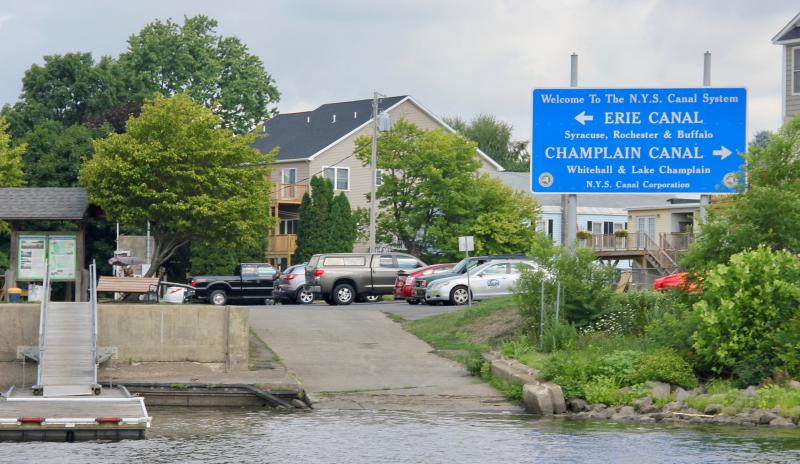ERIE CANAL ADVENTURE: 23 locks so far and counting
5 AUGUST 2020 - If you want to skip to the most entertaining part of this blog go to the bottom and click on the link that Jim sent me.
You’ll get Springsteen instead of me and a flavor of a good old Erie Canal song.
As of this writing we’ve passed through 23 locks on this historic canal that is approaching 200 years old. When completed in the early 1800s, the hundreds of miles of canal connected the Hudson River with the Great Lakes and opened the middle part of this youthful nation - waterwise - with the rest of the world. To say its completion goosed the nation’s economy is an understatement.
The canal has transitioned and grown greatly through the years evolving from little more than a ditch that could accommodate skinny barges pulled along towpaths by mules, to a much deeper waterway capable of handling much larger self-propelled vessels.
Railroads eventually eclipsed the canal’s economic usefulness while following the efficient route originally plotted by Erie Canal engineers. Much of that route follows the valleys of rivers like the Mohawk, the Oneida and the Seneca and their many waterfalls. That’s where the locks came in.
Using a system of gates and pumps, the locks either lift boats around falls and rapids to get to higher levels through the Appalachian chain, or lower them for the same purpose as the route eventually descends. Up from the level of the Hudson River at Albany and, westward, back down to the level of the Great Lakes at Buffalo. Hundreds of miles across and hundreds of feet up and down.
The dozens of locks are engineering marvels and endless entertainment for visitors. They create lots of dams and related hydroelectric power as well as extended expanses of twelve-foot water between the locks navigable by more than what otherwise would have been limited to whitewater rafts and kayaks.
Erie Canal spawned several other canals as the surrounding upstate New York region itched to get in on the economic boom the transportation progress stimulated. Canals branched off the Erie northward to Lake Ontario, southward into the Finger Lakes of Cayuga and Seneca, making connections between cities like Syracuse, Ithaca, Oswego and others.
During that canal-building heyday before the railroads swooped in, there was even a canal that connected the upper Delaware River with the Hudson.
Now though what was once a system of a dozen locked canals has reduced to five, used primarily by recreational boaters and the vessels that maintain the waterways. New York state spends millions annually on this beautiful system with pocket parks at every lock where vessels can tie up free overnight and where landbound visitors can picnic or use some of the many trails that border the canals. Seasonal employees and year-rpound maintenance workers man the locks, keep the mechanics working properly, and go through thousands of gallons of the state’s yellow and blue color paint to brand the system.
In this time of CoVid-19, canal traffic is light. The main Erie Canal just reopened for the 2020 season two weeks ago. The Oswego Canal that branches northward to Ontario won’t be fully open until next week. We’ve passed only a handful of vessels making the passage.
That’s enough for now. We’re on our way to Baldwinville near Lock 24. I have a lot to get caught up on in the next few days. And yes, I’m still searching out halos and will get into that in a few more days.
Thanks for reading. Here are a few more pictures and if you haven’t listened yet to Bruce singing about the canal, here’s the link: https://youtu.be/SDvYBCZwMIk.




























































